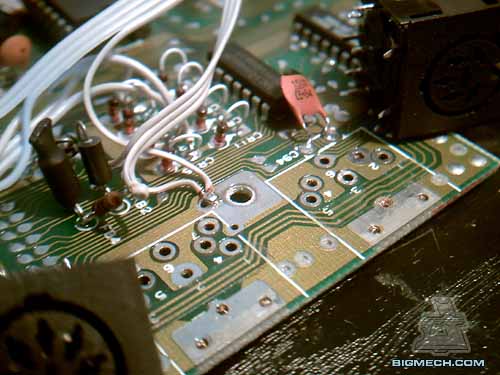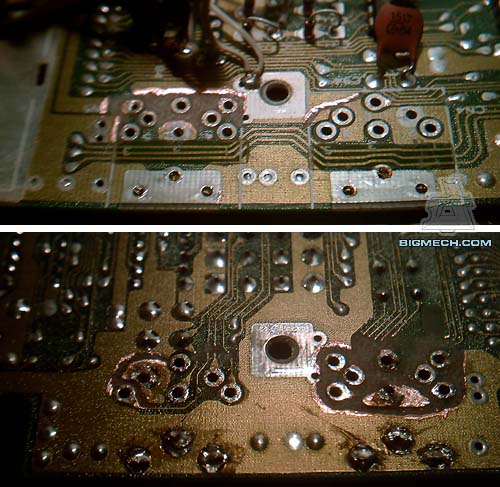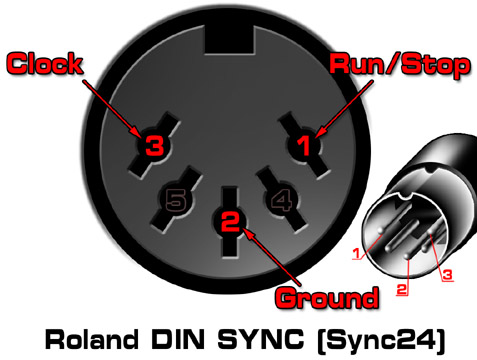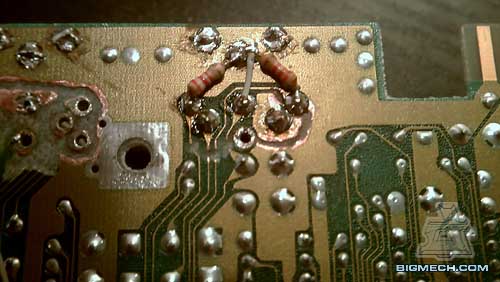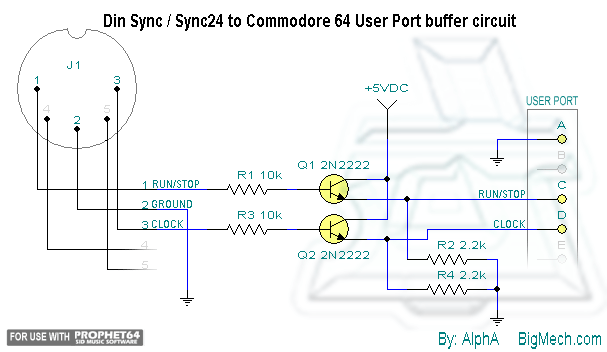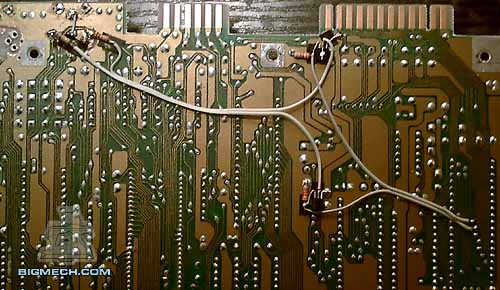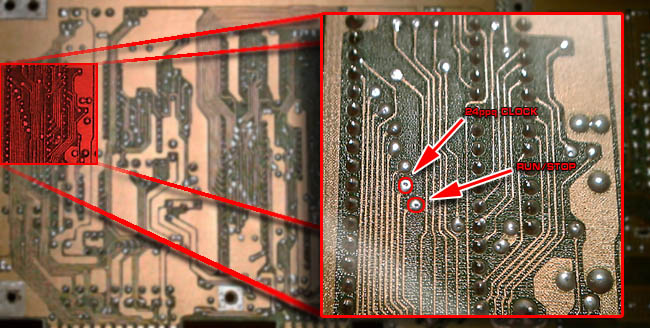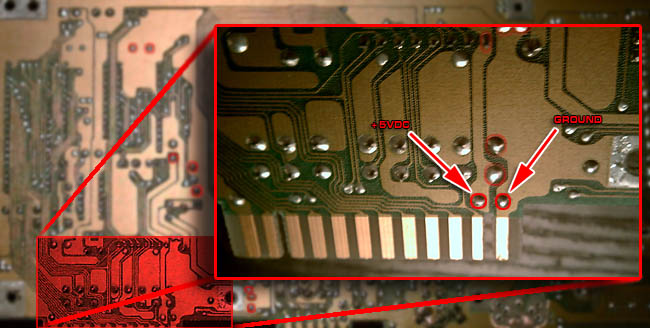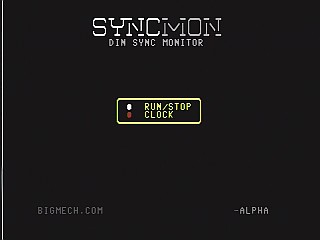|
The DIN Sync Input
Prophet 64 takes advantage of the C64 User Port and offers the ability to synchronize the computer with other electronic music equipment by utilizing Roland DIN Sync technology, also known as Synch24 (24 pulses per quarter note). This suits my studio, as much of my gear is synched via DIN Sync. Part of the DIN Sync standard involves the use of a 5 pin DIN connector, which is typically located at the top of a unit among other ports. The original video and serial port openings on the C64 are already the perfect diameter for a DIN Sync connector. I used the old serial port area since the DIN Sync connector already matched up with the through-holes on the main board
Now that the new connectors for video, serial and audio have been created, I can get rid of the original DIN connectors to make room for DIN Sync and power inputs.
I started by isolating the DIN connector solder pads from the rest of the circuit. For the sync input, simple trace cutting was sufficient. If it looks like I went overboard isolating the other DIN area, it's because I have. Higher voltages will be delivered to this area and additional isolation is essential. If you attempt the DIN Sync and power relocation mods, I recommend completing the DIN Sync mod before messing with the power. Troubleshooting issues will be difficult if you perform a lot of work without frequent testing. You may also want to examine and test the unit after using power tools on the main board, just to make sure nothing shook loose. Also, make sure to keep the board clean and brush away any residual dust which may have accumulated while removing traces. That stuff is still conductive!
It is almost time to start wiring everything up. But first, I have a few issues to address. The user port functions as an eight line bi-directional communications module. Both, the user port and DIN Sync are based on Transistor Transistor Technology (TTL). Since the user port is directly connected to one of the 6526 CIA chips, proper buffering is necessary for problem free use, as user port line status remains high until pulled down. Most modern equipment is well buffered and therefore will work with the user port without additional circuitry. However, the same is not true for some vintage equipment. I tested the user port DIN Sync with my Roland TR-606. This initial test was unsuccessful. DIN Sync was not designed to pull down voltage. Therefore, the 606 failed to change the status of the user port lines.
My first remedy was to add two 2.2k pull down resistors to help the 606 along. One resistor bridged the Run/Stop (User Port C or DIN pin 1) and Ground (User Port A or DIN pin 2), while the other was between Clock (User Port D or DIN pin 3) and Ground. This seemed to do the trick and the 64 was able to sync with anything I hooked it up to. However, I noticed that this caused my 606ís RUN/BATTERY led to glow dimly when it should be extinguished.
I was concerned about the long term effects of using my hardware with the pull down resistors, so I came up with this circuit to buffer both incoming lines while pulling down the user port lines. Works like a champ! This circuit should also keep my gear safe if the user port data direction registers are set to output rather than input. Buffering will remedy many DIN Sync issues, and it adds protection to the hardware.
Since the circuit was so small and space limited, I assembled the circuit on the solder side of the 64 main board.
You may download it here (along with other monitoring tools). NEXT» |
